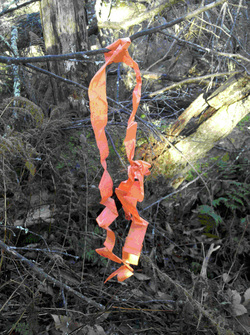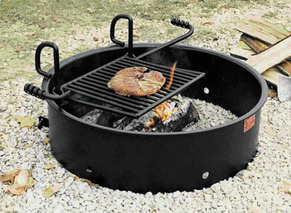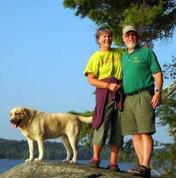First Time Readers of this Blog:
Disclaimer – I don’t claim that these are necessarily profound or original. They are what came to mind when, in preparation for a presentation titled: “20 Years of Adirondack Wilderness Expeditions,” I scanned a couple of hundred 35mm slides of the trips I have led. It was only after I had provided the title and description of the presentation that I realized it was more like 35 years of leading Adirondack ventures and that I’m getting older than dirt.
Backstory:
A number of people have asked me if I have already determined the fifty lessons learned. The answer is yes. When I planned the presentation mentioned above I came up with the list and then when I decided to create these blog entries I put them in priority order from 50 to number 1. Why a countdown? A la David Letterman I thought it would be more interesting to go from what I consider the least profound “lesson learned” to my most profound. People have also asked me what number 1 is and I’ll tell you what I told them. You have to wait and see. I may tweak the list as I move forward but I expect it to remain substantially the same.
#46 Don’t leave stuff in the outdoors. That includes, at campsites, lean tos, fire places or anywhere else.
Some stuff, like trash, I just can’t understand finding in the outdoors. What are people thinking? Oh, that’s right, they aren’t thinking. Why does anyone intentionally litter? We have had anti-litter campaigns since the 1920s and evidently they have improved the look of the land considerably yet we still have yahoos who think nothing of tossing their beer can, sandwich bag, candy wrapper, cigarette butt, and anything else you can think of over their shoulder without looking back. While this litter drives me nuts and we all have to continue to try to educate via soft sell (tv, radio, poster & other media campaigns) and hard sell (law enforcement), this “lesson learned” is not so much about this kind of stuff in the outdoors as it is about the subtle stuff we leave behind.
What do I mean? Let’s start with lean-tos my favorite symbol of a wilderness slum. First we frequently find food left behind. What could possibly be the reason for that? No one wants to eat the food you have left behind except perhaps mice, red squirrels, bears, other wild animals. How many times have you eaten food you have found in a lean-to? My guess is never. So, as the old saying goes, “If you pack it in, pack it out.” Don’t leave it behind thinking that you are doing somebody a favor. Good neighbors bring you food when you move in; they don’t leave it behind when they move away.


Here are Jack’s “rules are for fools” rules regarding putting things into fireplaces.
Put nothing into a fireplace…
- …unless there is a fire going. If there is no fire, put it in your pocket, food bag or someplace else until you have a fire. In many if not most environments the chances of whatever you put in the fireplace getting soaking wet before you have a fire are very high. There is also a good chance that whatever you put in the fireplace will get blown by the wind into the surrounding countryside between the time you put it there and the time you start a fire.
- …unless the fire is hot enough to burn whatever you are putting in it. That leaves out those twelve inch logs. Hell, it even leaves out those six inch logs. My rule of thumb is if there isn’t plenty of wood the diameter of my wrist, I don’t have a fire. This rule also prevents food waste from being put into the fire unless it is roaring hot. Food waste can burn but only in an extremely hot fire.
- …unless it is combustible. Many of our food containers look like they are made of paper but are aluminum foil lined. If in doubt pack it out. Plastic does burn but I avoid burning it as I don’t believe it is particularly healthy for our lungs or the environment. I recommend not burning plastic in the fireplace.


You may ask, “What the hell’s the difference? Why do you even care?” To some extent if you ask the question then you probably don’t get the value of the wild outdoors. I know I risk sounding arrogant or elitist. Perhaps I am. What makes the wild outdoors different than regular rural outdoors? I would argue that the more natural an area is the more you can enjoy the sense of naturalness. (as opposed to unnaturalness i.e., signs of humans – I know, humans are part of the environment and are thus “natural” but for our purposes I would argue humans are the only animal that can manipulate the environment to such an extent that it no longer appears “natural.” Naturalness is a discussion beyond the scope of this blog entry.) The more natural the wild outdoors is the greater your “wilderness state of mind” is. Roderick Nash does a great job of talking about wilderness as a “state of mind” in his book, Wilderness and the American Mind . Suffice to say that how you feel about your sense of wildness really determines how wild it really is. In other words when I hunt in one area that has very few signs of humans I really get a great sense of wildness. Never mind that it is not officially a wilderness area. The point is that if you leave the litter, surveyor’s tape, and other human detritus at home, the wilder you will feel thus the wilder the land will be. If this makes no sense to you or you don’t buy it than it just means naturalness and wildness are not that important to you. Sorry, there I go sounding elitist again.
Bottom Line:
- If you carry it in, carry it out. It is a simple phrase but it is absolutely true. The only thing you should leave behind in the wild outdoors is your body waste and perhaps toilet paper well buried. That’s it, nothing else!
- Wildness is a state of mind created by the absence of signs of humans.
To visit #45 Click Here (not active yet)




 RSS Feed
RSS Feed
